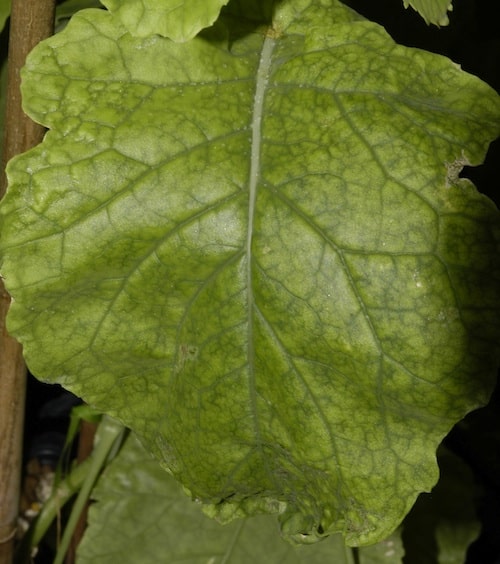
Canola needs a little bit of boron, and most Canadian Prairie soils have enough to meet this demand. Boron deficiency, if it occurs, is more likely in sandy soils with low organic matter or in high pH soils. Soil pH above 8 will reduce boron solubility. The Canola Encyclopedia chapter on micronutrients includes more detail on boron.
Boron deficiencies look like:
- Interveinal chlorosis. Veins are green but the rest of the leaf is light green. (See the photo above.)
- New leaves are stunted and may roll up along the length of the leaves around the mid vein.—Short, stunted root hairs and poor rooting.
- Long and unproductive flowering period. Boron is involved in pollen tube fertilization, and with boron deficiency, pods may not form. The plant keeps flowering and flowering producing new bud clusters from leaf axils, trying to get fertilization and pod set to occur.